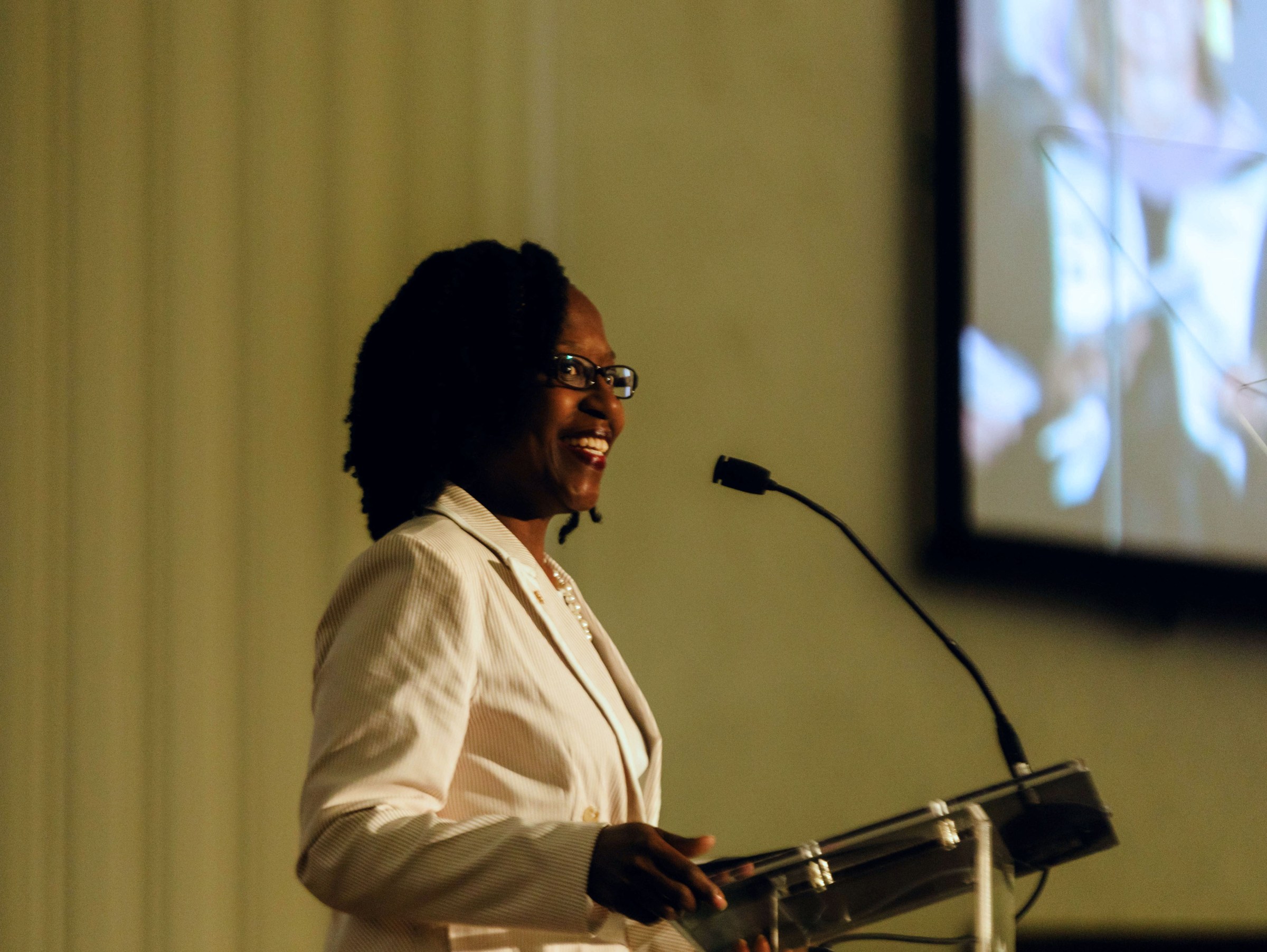2024 Alumni Award

May 20, 2024
By Laura Mcknight, for TuSA
Travel Louisiana, and you’ll see the state’s complex history reflected in the buildings and landscapes: French Quarter homes crafted by New Orleans’ free people of color, earthen mounds created by American Indians, numerous churches, schools, stores, and more with stories to tell.
In visiting these sites, you will also see the influence of this year’s Angela O’Byrne Award winner Nicole Hobson-Morris, MPS *01, and her team.
The award recognizes Hobson-Morris’ work as Executive Director/Deputy of the Louisiana Division of Historic Preservation, State Historic Preservation Office (SHPO), through which she has made outstanding contributions to the preservation world while advocating for diversity within the field.
“She is instrumental in recovering the extraordinary architectural legacy of New Orleans and Louisiana,” said Iñaki Alday, Dean and Koch Chair in Architecture for TuSA. “Many of the beautiful historic buildings and structures that we enjoy today are on their feet thanks to her work.”
Hobson-Morris and her team are responsible for stewarding resources, setting strategies, choosing priorities, and advocating for Louisiana’s built heritage, Alday noted.
“Nicole’s work touches and guides so many projects throughout the state of Louisiana, that her impact cannot be overstated,” said Angela O’Byrne, the award’s namesake.
Hobson-Morris’ passion for preservation is evident when she speaks. A native of St. Croix, steeped in the Trinidadian culture of her family, Hobson-Morris moved to southeastern Louisiana in her adolescence and found significant similarities between her new home and her island heritage: the food, the historical influences, the architecture.
“Rich history, everywhere you look,” she said of Louisiana. “Like they say in Trinidad, history for days.”
Her team’s work encompasses “all things about our culture,” she said, fighting to salvage historical markers essential to local legacy.
“We lose a lot when we lose our history,” she said.
Hobson-Morris grew interested in historic preservation as a graduate student, when she discovered the field at the Savannah College of Art and Design (SCAD) in Savannah, GA. She returned to Louisiana due to financial reasons, and by chance learned that Tulane University had a brand-new historic preservation studies program.
“All things align, and we find ourselves where we’re supposed to be,” she said.
Hobson-Morris started working with the SHPO in 2001, months before her graduation, and with the exception of an 8-month stint with an environmental firm, has been there since.
“I missed the public outreach so much,” she said of her brief time away from the SHPO. “The ability to assist, to help, to feel like you are making a difference. We can look across the state and see the impact due to the work we’ve done.”
Hobson-Morris said the 10-member Historic Preservation team is small but accomplishes much. The office reviews every historic preservation project pursuing historic tax credits, projects that involve or could impact historic sites, and evaluates and nominates places for inclusion on the National Register of Historic Places. In essence, she plays a powerful role in safeguarding tangible markers of the state’s one-of-a-kind history.
Hobson-Morris said she is especially proud of Louisiana’s Main Street Program, an effective way to preserve and revitalize historic commercial districts throughout the state.
The team also helps preserve state history through Section 106 reviews, required when federally-assisted projects could potentially impact historic properties. The reviews place the team amid projects ranging from new construction to pipeline work to disaster response.
In fact, Hobson-Morris said the SHPO’s involvement in rebuilding post-Katrina made the biggest impact on her professional career – and drove home a pivotal lesson from Professor Emeritus in Architecture, Eugene Cizik.
“He taught us how the culture of a community impacts the architecture in the community,” she said. “I didn’t realize how important his guidance was until after Katrina.”
In the aftermath of Katrina, the SHP helped property owners in the New Orleans area and other affected municipalities, return home as a result of congressionally delegated funds from the National Park Service through the creation the creation of the Historic Building Recovery Grant Program. The program gave Hobson-Morris a deeper understanding of how multi-generational families with long legacies in New Orleans created the culture that influenced the architecture.
“It was just this massive breakup of families that really created the cultural identity of a particular area,” Hobson-Morris said, which led her to truly absorb Cizik’s teachings: “It’s not just about the buildings. There was no building without the people.”
Hobson-Morris strives to apply that mode of thinking to her work, to “remembering why we do what we do.”
“It is about the people,” she said.